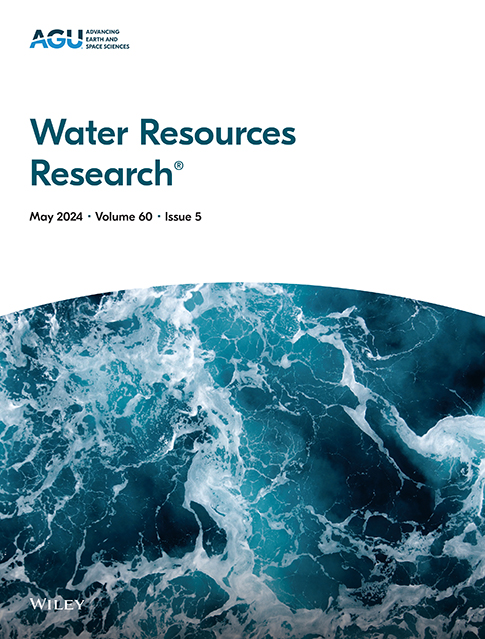An Optimization-Simulation Method for Low-Impact-Development (LID) Facilities Based on CCMO Algorithm Combining an Integrated Finite Volume Coastal Ocean and Drainage Pipe Model
IF 5
1区 地球科学
Q2 ENVIRONMENTAL SCIENCES
引用次数: 0
Abstract
The employment of Low Impact Development (LID) facilities is an effective means to alleviate urban flood in the context of climate change and urbanization. Existing methods for evaluating the hydrological reduction and control effect of LID facilities are mostly based on hydrological models, which have inherent shortages in accurate flood process simulation. In this study, a fully-distributed bidirectional-coupled hydrodynamic model based on the Finite Volume Coastal Ocean Model (FVCOM) and a one-dimensional drainage pipe model is used to evaluate the effectiveness of LID facilities combining the Coevolutionary Constrained Multi-objective Optimization (CCMO) algorithm. The proposed method is applied to investigate the responses of LID facilities effectiveness in hydrological reduction and control to rainfall patterns in the Yuelai New City, Chongqing, China. Results show that the overflow volume and peak overflow under unimodal rainfall are larger than those under other rainfall patterns. The time lag between initial and peak overflow under unimodal rainfall is the shortest, and it is shorter under small rainfall return period. The flood reduction and delay effect of LID facilities under unimodal rainfall is lower than that under bimodal rainfall, and it is the best under uniform rainfall. At low costs, the peak flood reduction effect of combined LID facilities may be lower than that of a single LID facility with strong permeability, but as costs continue to increase, combined LID facilities show its superiority. The proposed optimization-simulation method is of great significance for environmental managers to seek best solutions in urban flood control.基于CCMO算法的低影响开发(LID)设施优化仿真方法——结合有限体积海岸海洋和排水管综合模型
在气候变化和城市化的背景下,采用低影响开发(Low Impact Development, LID)设施是缓解城市洪水的有效手段。现有评价LID设施水文减量和控制效果的方法大多基于水文模型,在精确模拟洪水过程方面存在固有的不足。本文采用基于有限体积海岸海洋模型(FVCOM)和一维排水管模型的全分布双向耦合水动力模型,结合协同进化约束多目标优化(CCMO)算法,对LID设施的有效性进行了评估。以重庆悦来新城为例,应用该方法研究了LID设施的水文减量和控制效果对降雨模式的响应。结果表明:单峰降水条件下的溢流量和溢流峰均大于其他降雨条件下的溢流峰;单峰降水条件下初始溢流与峰值溢流之间的滞后时间最短,小降雨回归期条件下更短。单峰降雨条件下LID设施的减洪延汛效果低于双峰降雨条件下,均匀降雨条件下效果最好。在成本较低的情况下,联合LID设施的减峰效果可能低于渗透性较强的单一LID设施,但随着成本的不断增加,联合LID设施显示出其优势。本文提出的优化模拟方法对环境管理者在城市防洪中寻求最优方案具有重要意义。
本文章由计算机程序翻译,如有差异,请以英文原文为准。
求助全文
约1分钟内获得全文
求助全文
来源期刊

Water Resources Research
环境科学-湖沼学
CiteScore
8.80
自引率
13.00%
发文量
599
审稿时长
3.5 months
期刊介绍:
Water Resources Research (WRR) is an interdisciplinary journal that focuses on hydrology and water resources. It publishes original research in the natural and social sciences of water. It emphasizes the role of water in the Earth system, including physical, chemical, biological, and ecological processes in water resources research and management, including social, policy, and public health implications. It encompasses observational, experimental, theoretical, analytical, numerical, and data-driven approaches that advance the science of water and its management. Submissions are evaluated for their novelty, accuracy, significance, and broader implications of the findings.
 求助内容:
求助内容: 应助结果提醒方式:
应助结果提醒方式:


